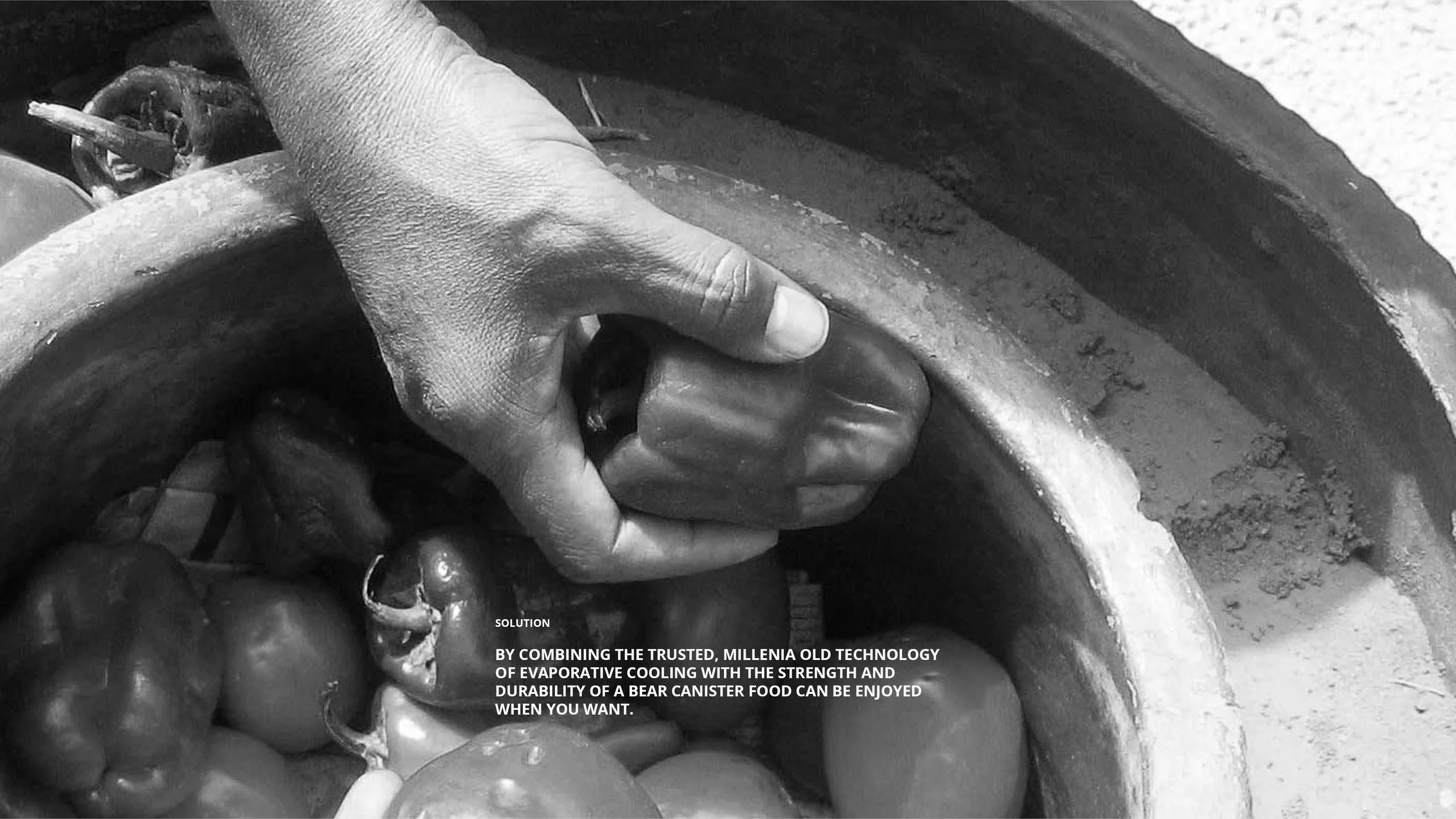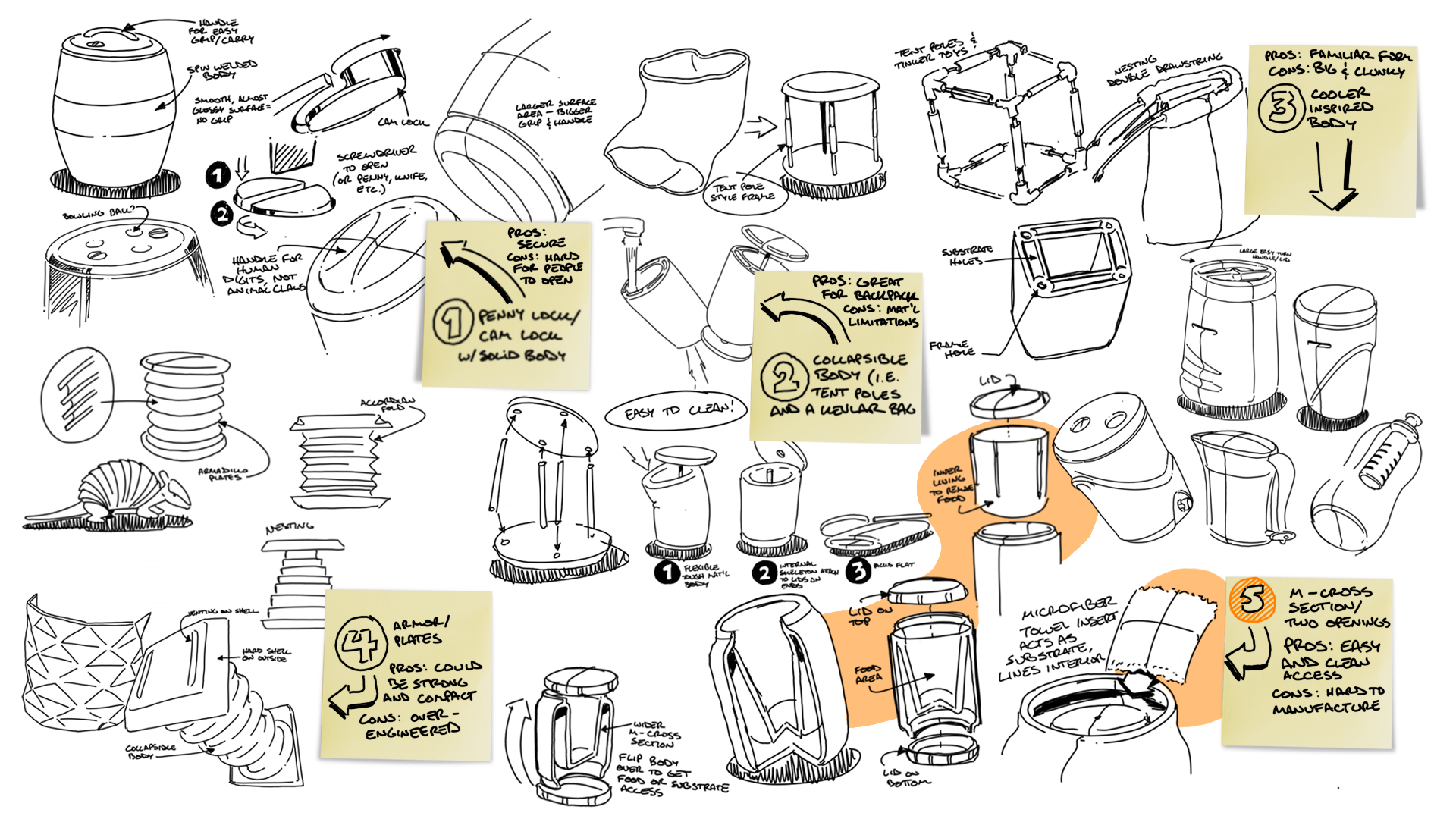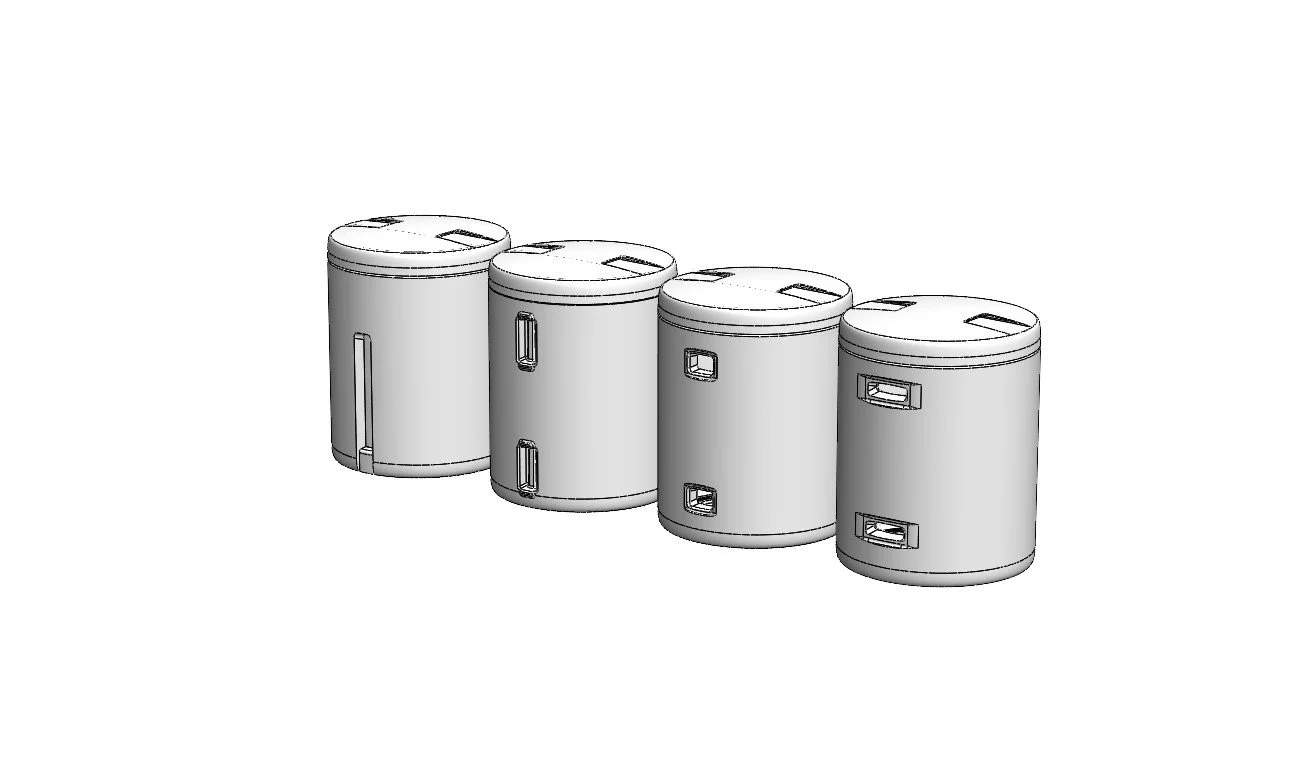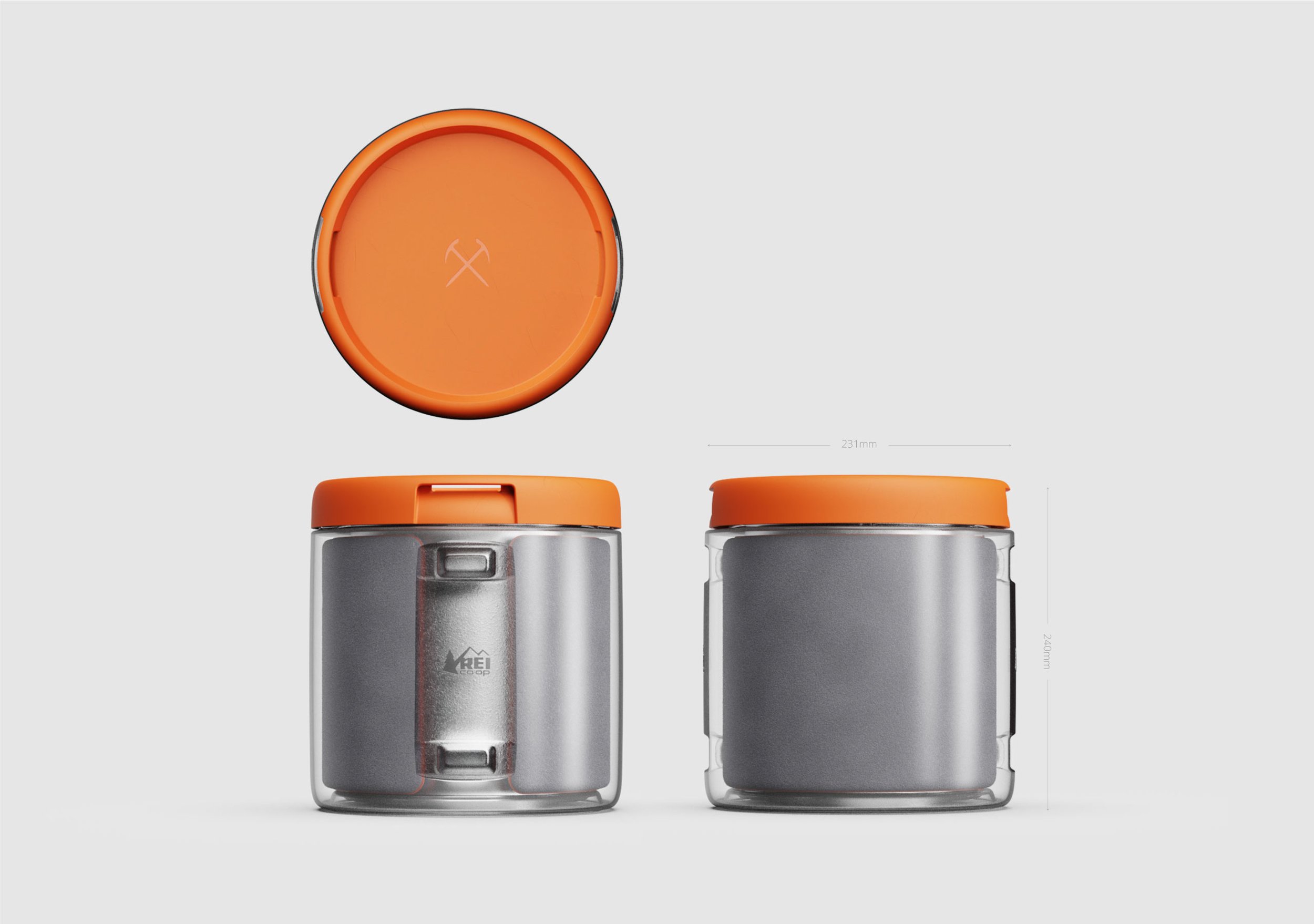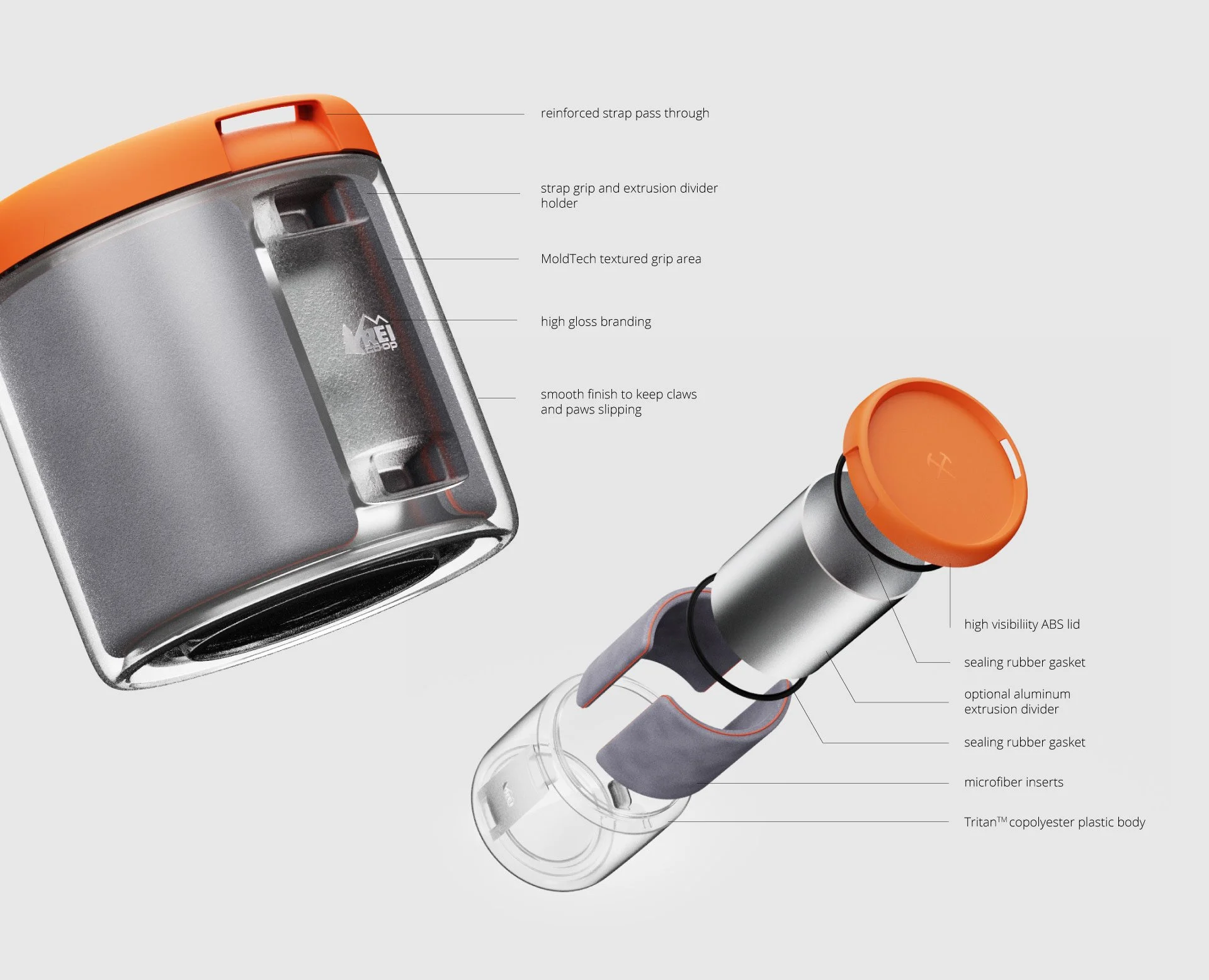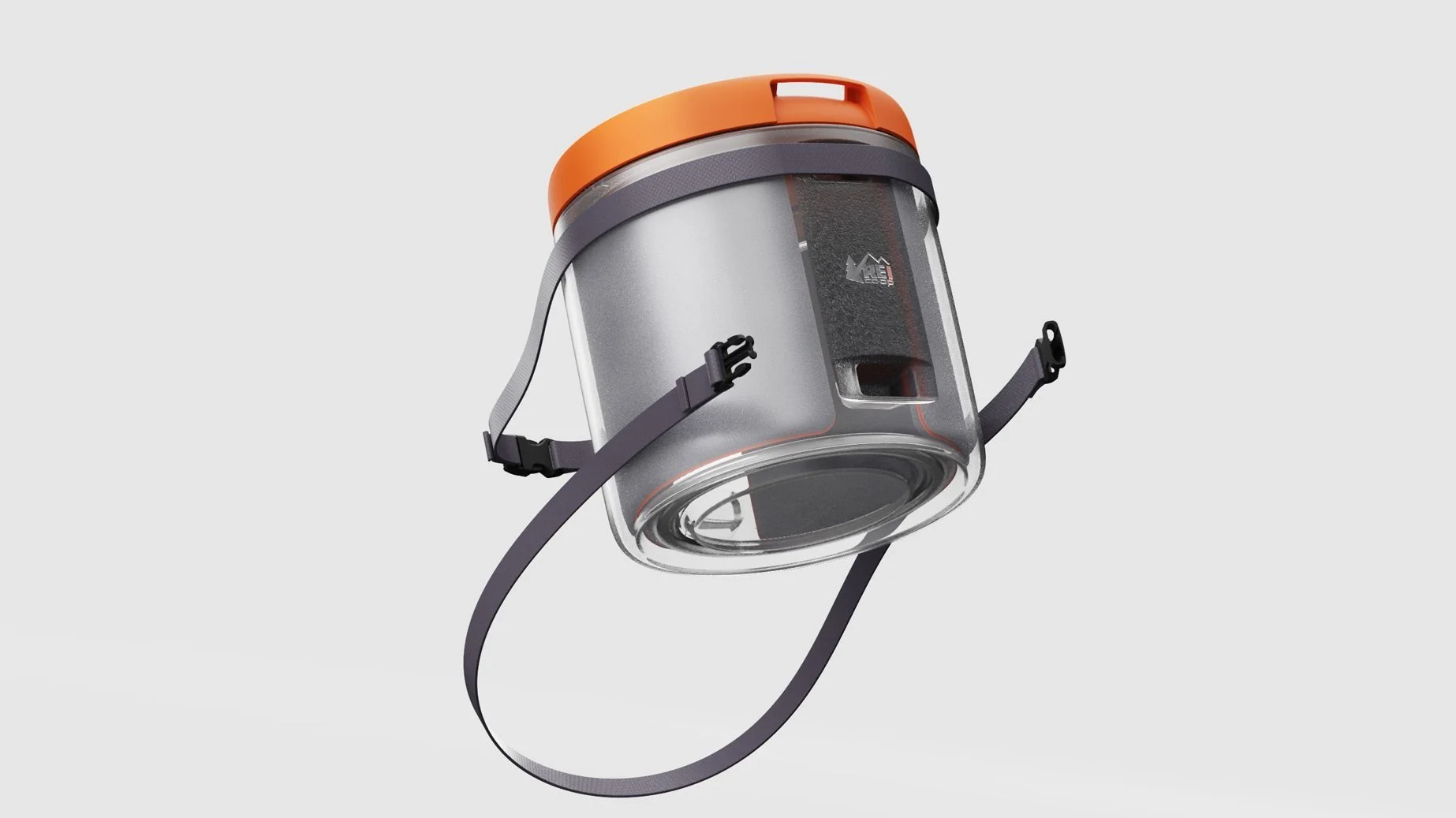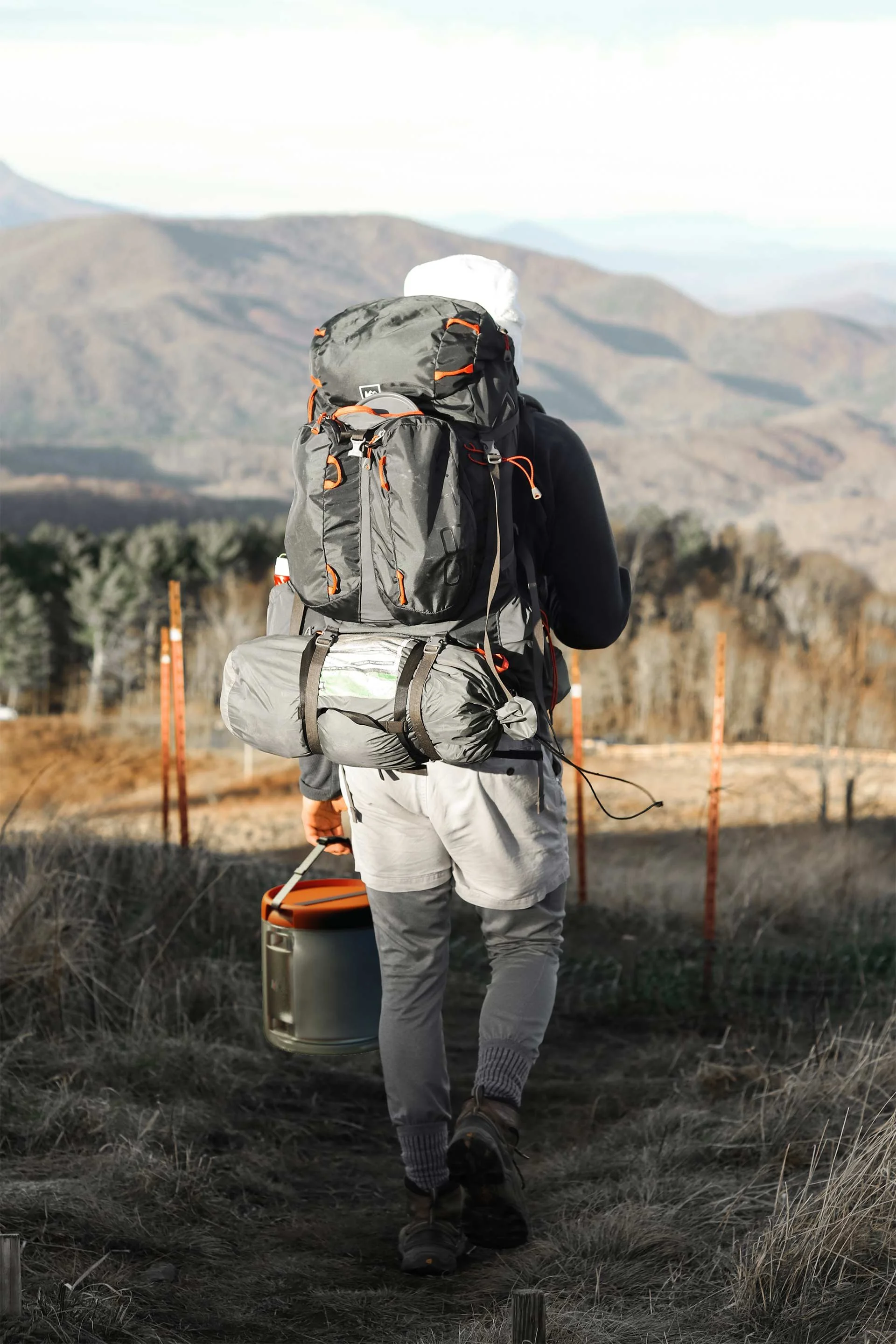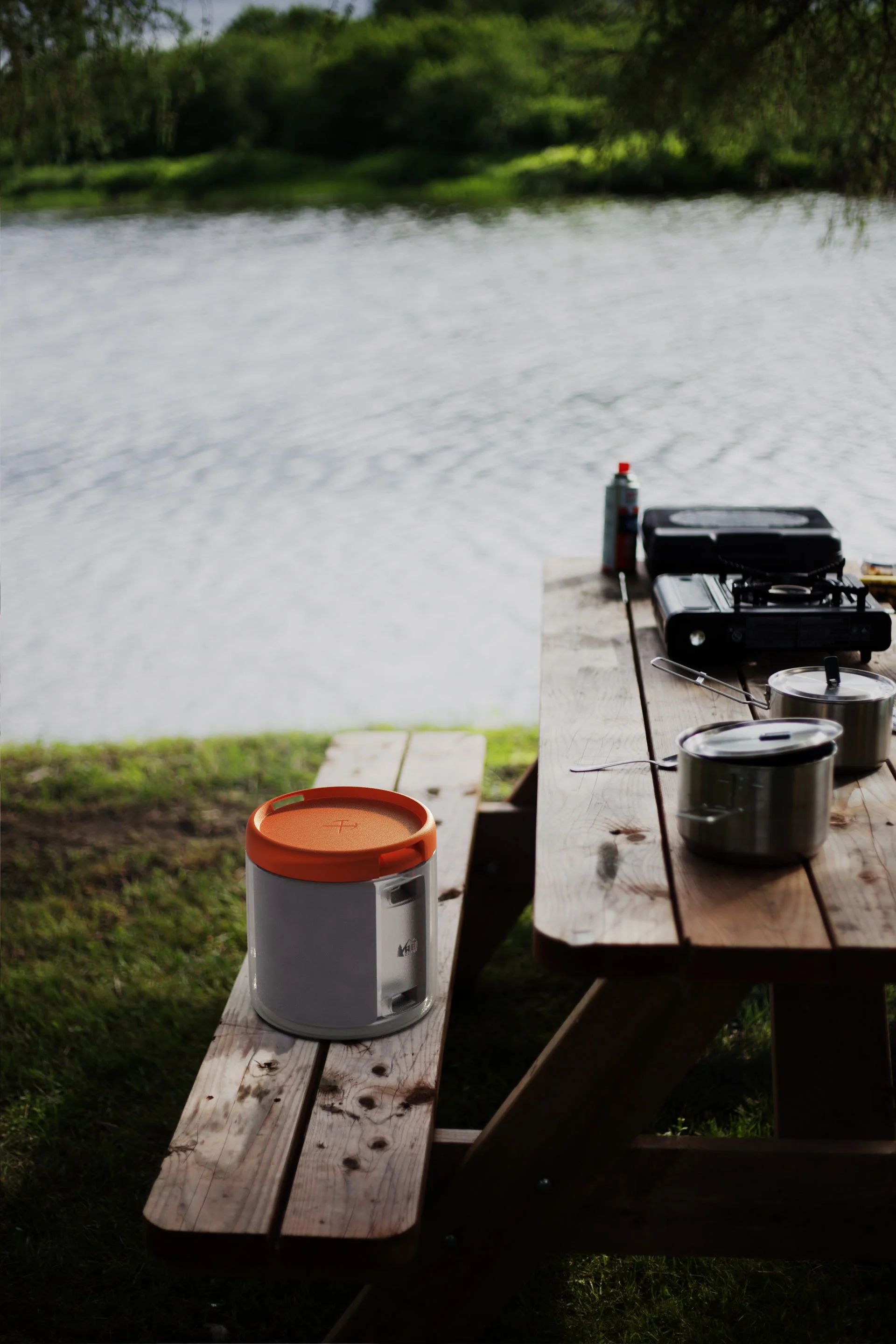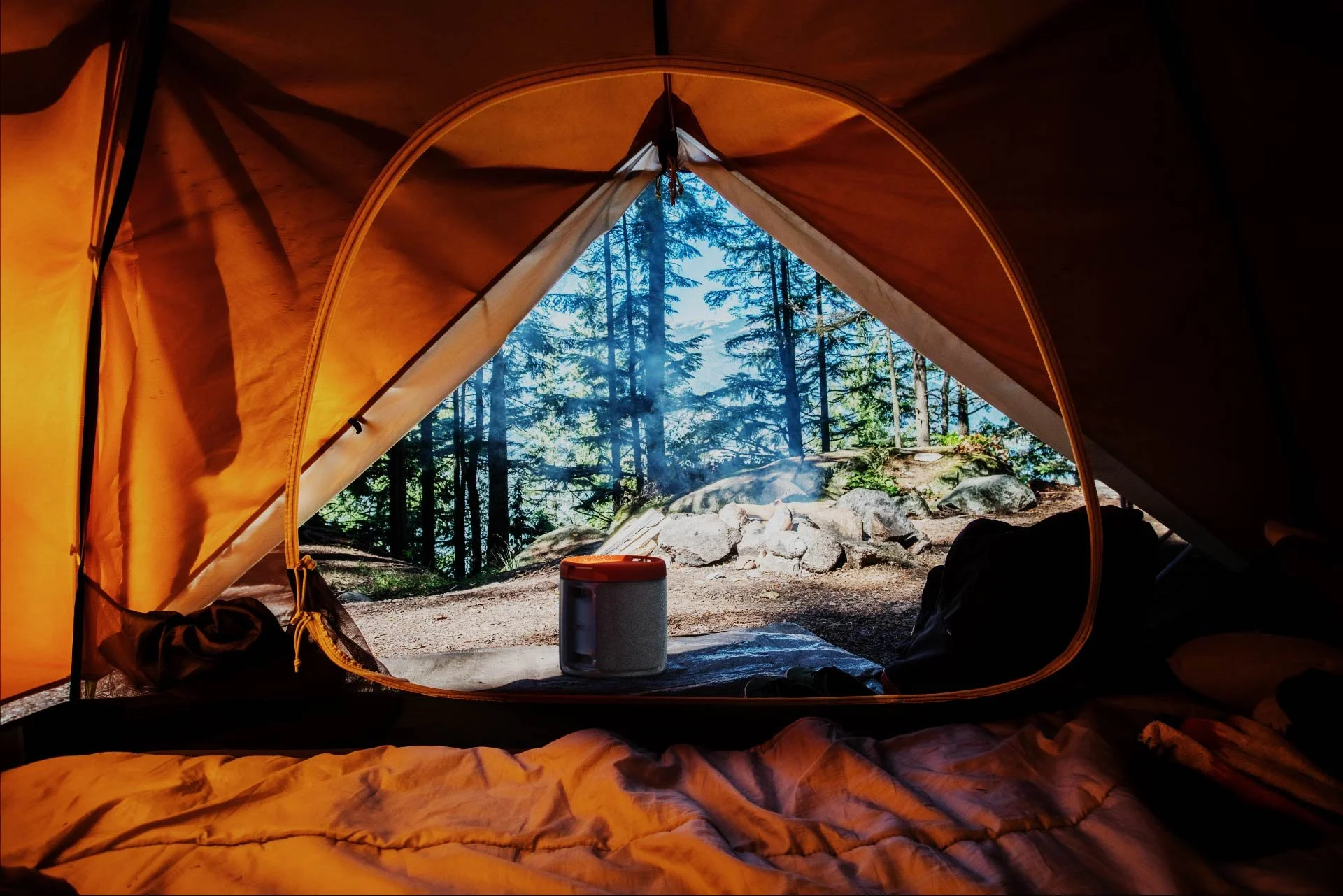REI CO-OP: CACHE BEAR CANISTER
PERSONAL/CONCEPTUAL WORK
DISCLAIMER: This project is in no way directly affiliated with the REI CO-OP. All opinions and statements are based on my own research and interpretation.
REI Co-op has created countless products for its own brand to give its customers a less expensive, and just as high-quality product alternative to the other name brand products that are sold in their stores. At the moment there are a few bear resistant food canisters that REI sells, but all of them fall short in maximizing the shelf life of the food stored in them for backpacking and camping trips.
As a visual brand language and new category product development exercise, I challenged myself to create a conceptual bear canister fit for REI that would help adventurers enjoy their food longer and at their own leisure. The final solution was a bear-resistant food container with evaporative cooling.
DISCIPLINES
Industrial Design, Sketching, Graphic Design, Research, Prototyping, Photography
WHY A BEAR CANISTER?
I identified this as a gap within the REI CO-OP product portfolio despite the fact that there are many food storage/appliance products sold in their stores. Since creating this project REI has released its own bear canister. While at the moment there are a few bear resistant food canisters that REI sells, all of them fall short in maximizing the shelf life of the food stored in them for backpacking and camping trips.
REI CO-OP VISUAL BRAND LANGUAGE
BODY DESIGN
The forms that gave enough surface area for evaporation to be most efficient were a tetrahedron or a cylinder that is as tall as it is wide. With most of the bear canister market using a cylinder as a base for the form, coupled with the fact that it fit easily fit into most backpacks, it was the practical way to go.
FUNCTIONAL DETAILING
Through my iterations to define the internal food divider, I stumbled across an idea to make a multifunctional detail. An existing cut in the body of the canister could be used as a tie-down area to strap it down to a backpack.
The locking device is similar to that of a pill bottle. When opposite sides are pushed together it allows the top to unscrew.
The user opens the container, soaks the microfiber pads with water, lines them along the inside between the dividers, places the rubber gaskets on each end of the aluminum insert for an airtight seal, puts the insert with the gasket in place into the ribbed bottom, places the food inside, and finally screws the lid back on until they hear repeated clicks. At that point, evaporation will begin to take place and the aluminum insert will conduct the cold feeling of the evaporation to the food preserving it for a longer period of time.




